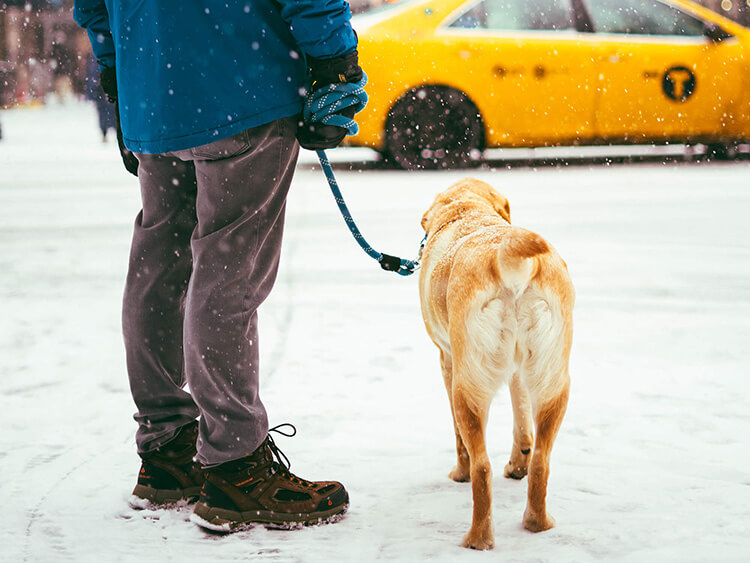

Salt Safe for Pets
The weather outside can indeed get a bit frightful this time of year, but it’s still important to get your dog outside for walks. We’ve even written an article entitled Sun Exposure for Dogs about how your pup needs to see the natural light in the winter, just like you do. One thing to keep in mind, though, is salt placed on outdoor surfaces. Salt can be irritating to your pup’s sensitive paws. Not to fear—we’ve included tips on enjoying winter strolls but keeping your pet’s paws healthy.
Snow Boots for Dogs
One option is to purchase booties for your pet. A brand we’ve tested and approved are the RuffWear boots. Not only will they keep your dogs’ paws free from salt, but they’ll insulate body heat and keep them protected from ice and snow as well. It may take awhile for your dog to adjust to the new fancy footwear, but we’ve found, once you get walking, they tend to forget they’re wearing the boots.
Paw Rinse or Rub
The next possibility is rinsing your pet’s paws or wiping them with a wet, warm towel to remove the salt. If you really want to give your pet the royal treatment, purchase some paw pad balm that will nourish and soothe any cracking spots and keep their paws supple and healthy. Keeping paws moisturized will help provide a barrier from harm. This Dodo article gathers some favorite dog paw balms and waxes.
Is Ice Melt Safe for Pets?
In short, the answer is that any ice melt made with chlorides will be dangerous to your pet’s health. Magnesium chlorides are damaging to pets with renal issues and calcium chlorides are the most harmful of all salts. Using a safer sidewalk salt can help ensure your pet’s safety. Safe Paw Ice Melt is a particular brand that is a better choice if you have pets around. In an article that delineates the five different ice melt types, it explains the difference: “Unlike many other products on the market today, ice melt products using glycols will not be corrosive.” An added bonus is that it’s safer for the environment.
Salt Toxicity
Not only is salt bad for their paw pads, but it can also cause digestive upset. This American Kennel Club article on hypernatremia, or salt overdose, in dogs explains how it happens and the symptoms to monitor. How exactly does salt toxicosis work? The article explains, “when the sodium amount in the blood becomes too high, it draws water out of the cells and into the bloodstream to restore the balance. That harms the cells and can affect the brain and nervous tissue.”
According to the AKC advice, watch out for these signs of hypernatremia:
Vomiting and diarrhea
Lethargy and decreased appetite
Lack of coordination or wobbly legs
Excessive thirst or urination
Seizures or tremors
If you suspect salt poisoning, call your vet or emergency clinic right away. It’s a good idea to save these numbers in your phone in case of an emergency and you need to quickly contact them.
Savor the Season
It might take a bit of extra work to walk your dog safely when the temperatures plunge. We think it’s worth it, though, as you watch your pup’s expression light up as they see flurries or enjoy the crisp air. For more ideas on what to do with your pet this time of year, check out our Winter Activities article.
